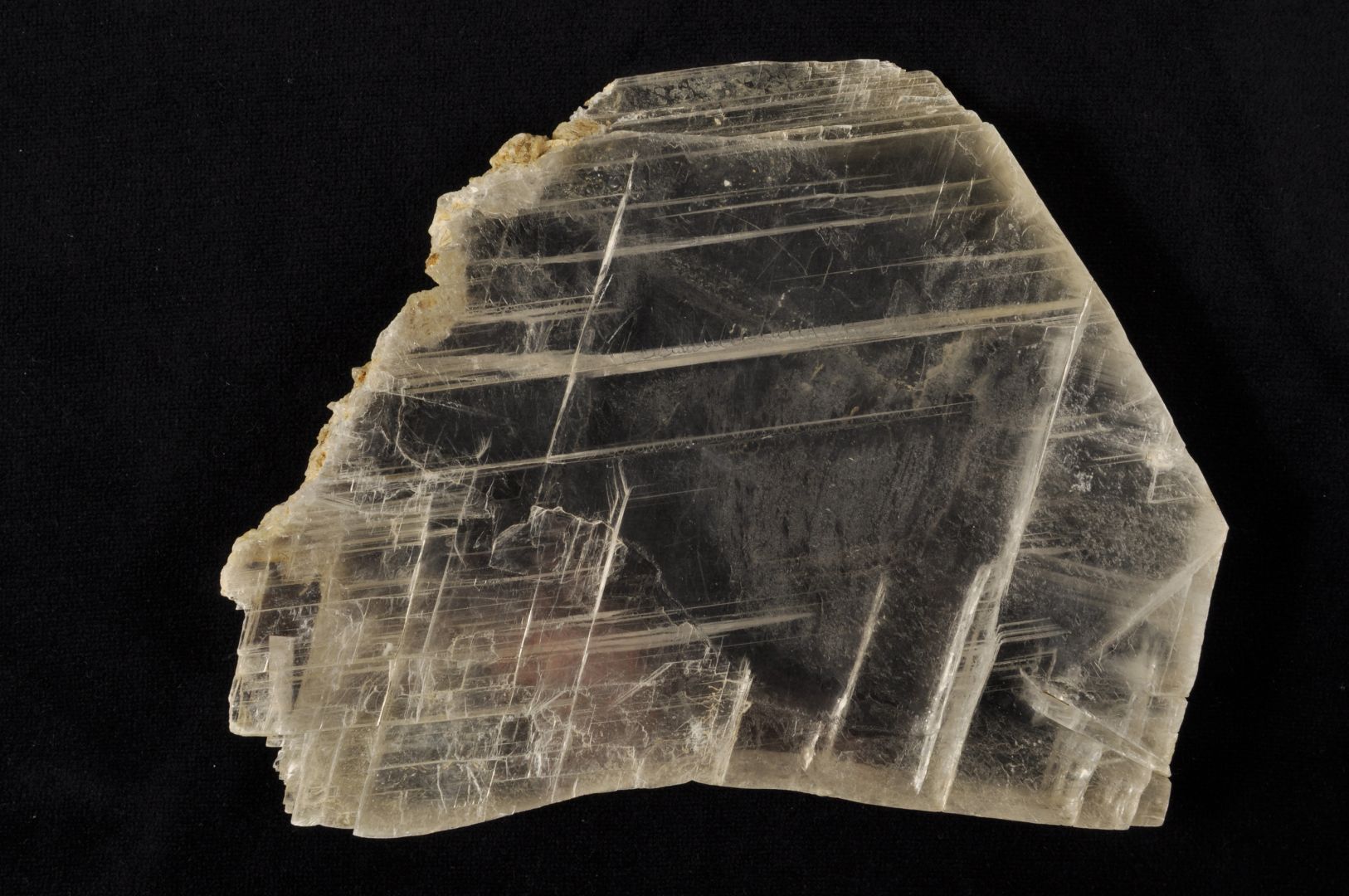MINERALS OF THE CARPATHIANS - 4. view / Gilău and Trascău Mountains, Transylvanian Basin
Window from gypsum!
Colourless, water-clear, large laminated gypsum is also called isinglass. This name originated in Germany, where in the Middle Ages it was used to replace glass plates in front of images of the Virgin Mary or in reliquary vessels because unlike a real glass of the time, isinglass was not bubbly and could be easily made into plates of uniform thickness by cleaving. However, this property was already known to the Romans, who used it for window making, because the quality (flatness, transparency) of the glass produced in antiquity was not good enough to be used for making window panes. It is also worth noting that thin, transparent plates of muscovite (a kind of mica) are also called isinglass. Due to its heat resistance, it is still used for covering the orifices of stoves or gas convectors, for example.
In the picture: Gypsum (isinglass), limestone, Cheia, Romania. Size: 15 cm. Photo by Géza Kulcsár
